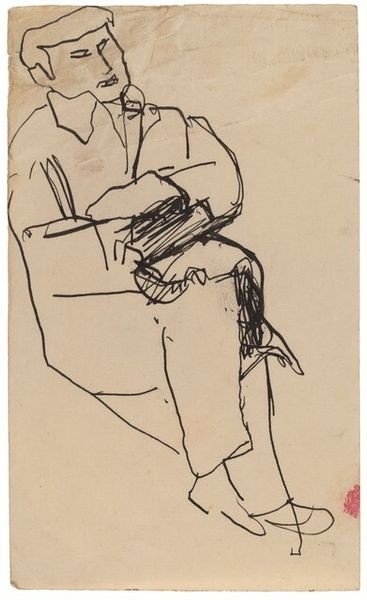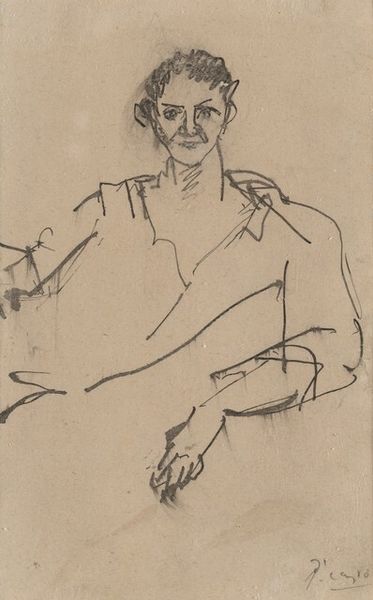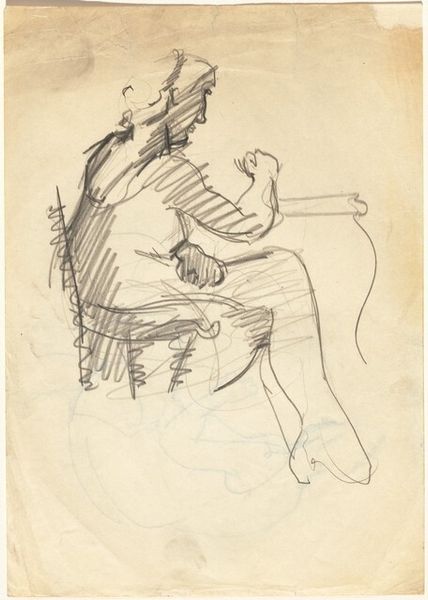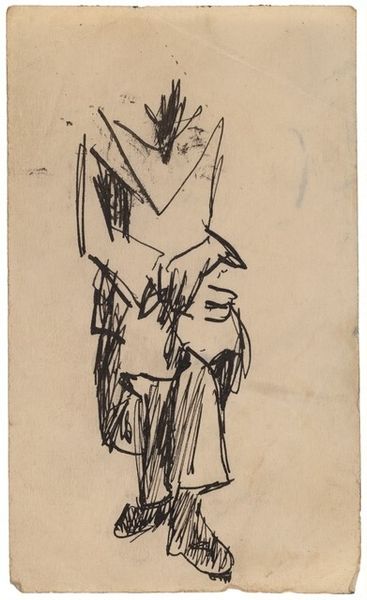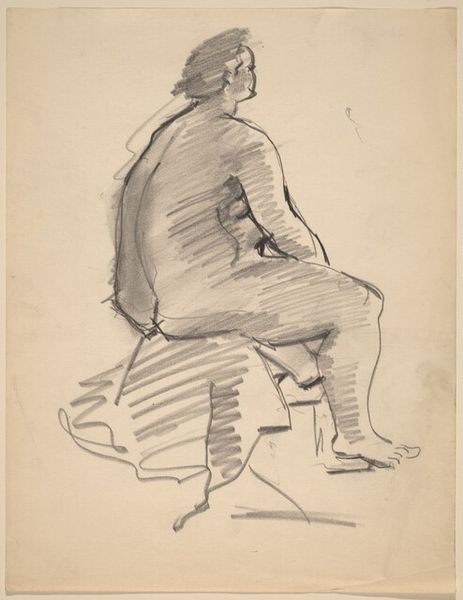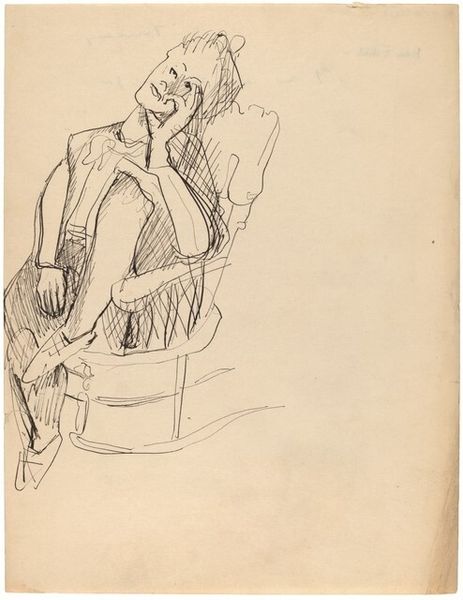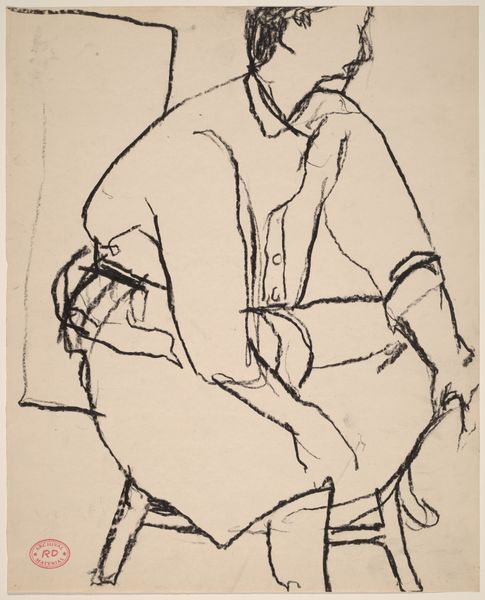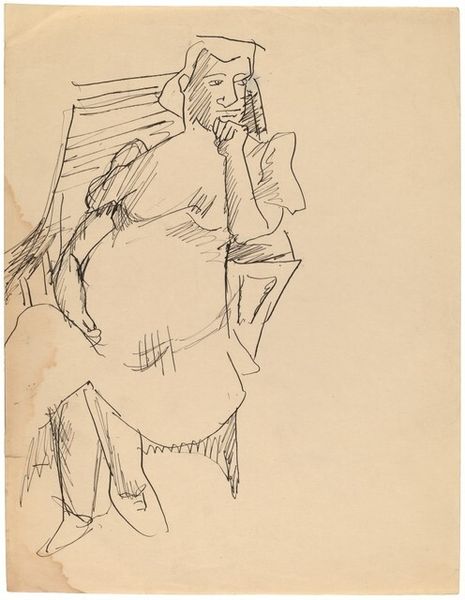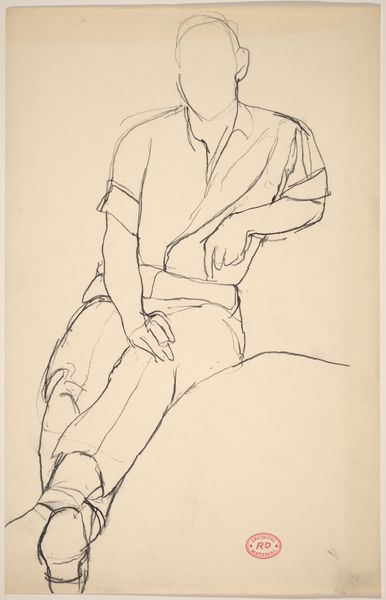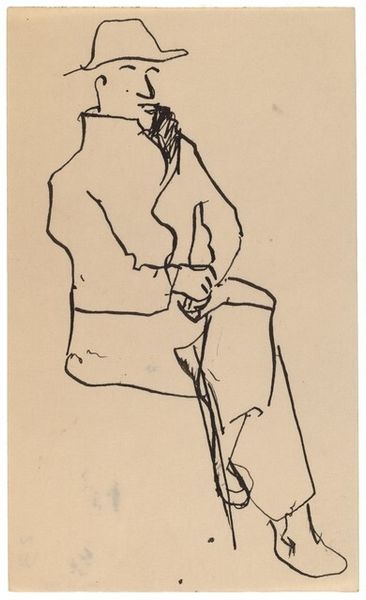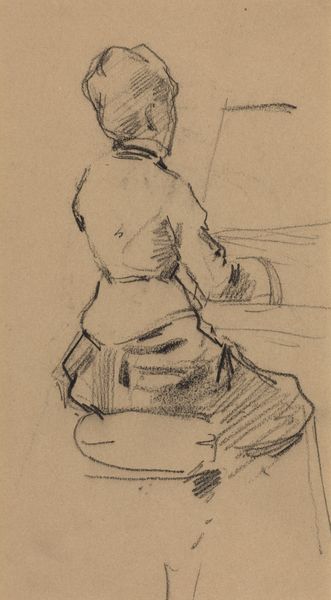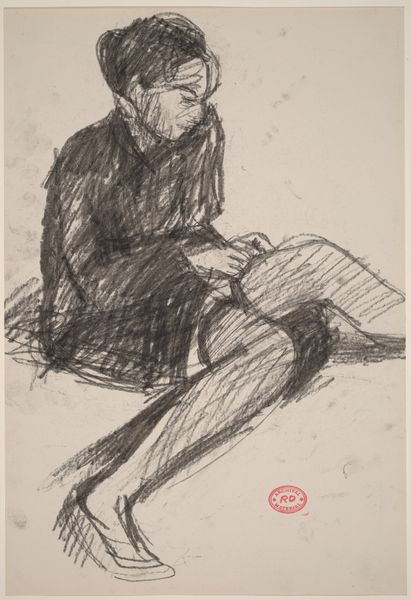
drawing, pencil
#
portrait
#
drawing
#
ink drawing
#
pen sketch
#
pencil sketch
#
figuration
#
pencil
Dimensions: overall (approximate): 29.6 x 22.7 cm (11 5/8 x 8 15/16 in.)
Copyright: National Gallery of Art: CC0 1.0
Curator: We’re now looking at “Seated Figure with Right Ankle Crossed Over Left Knee," a drawing by Mark Rothko. Editor: It feels immediate, doesn’t it? Captures a quiet intimacy. There’s an economy to the lines, a real sense of the figure’s presence, almost meditative. Curator: Exactly, and it's important to consider what a drawing like this tells us about Rothko’s process. This is pencil on paper—humble materials. How does this early figuration relate to his later, monumental abstractions? Was drawing an iterative, labor-intensive precursor to the large, colorful canvases he is better known for? Editor: That’s a great question. This piece reads to me as an observation of the body. Look at the posture, that ankle casually resting on the other knee. The averted gaze suggests internal reflection, but what does it tell us about representations of class, gender, or perhaps even mental health? Is the figure world-weary? Lost in thought? Rothko had an interest in psychoanalysis; perhaps this piece represents his attempt at visualizing the complexity of being. Curator: It’s tempting to place this within a linear narrative of Rothko “finding” abstraction, but I think we risk overlooking the inherent value in this work. Considering its materiality allows us to avoid such readings: The rough paper stock, the speed and decisiveness of the linework, and the absence of finish all give clues about artistic intent. Editor: But to ignore its potential social or historical resonance seems equally short-sighted! Think about who had access to the leisure of being ‘seated’ or being reflective; there's the risk of reproducing social structures or hierarchies if that's ignored. Who is the figure depicted here, and where and when would such a subject have been possible? Curator: You're right to make that crucial intervention; we have to acknowledge the risk of perpetuating elitism when analyzing art. At the same time, I remain fascinated by the dialogue between intent and the “raw” materials utilized. Editor: Absolutely. Seeing this drawing through a social lens alongside its materials illuminates Rothko’s entire oeuvre more comprehensively, doesn't it? It pushes us beyond surface appreciation and urges critical thinking. Curator: Indeed. I see a kind of working through ideas happening. Editor: I see a silent commentary on the inner life—one that’s layered with potential cultural meanings we have to unpack.
Comments
No comments
Be the first to comment and join the conversation on the ultimate creative platform.
